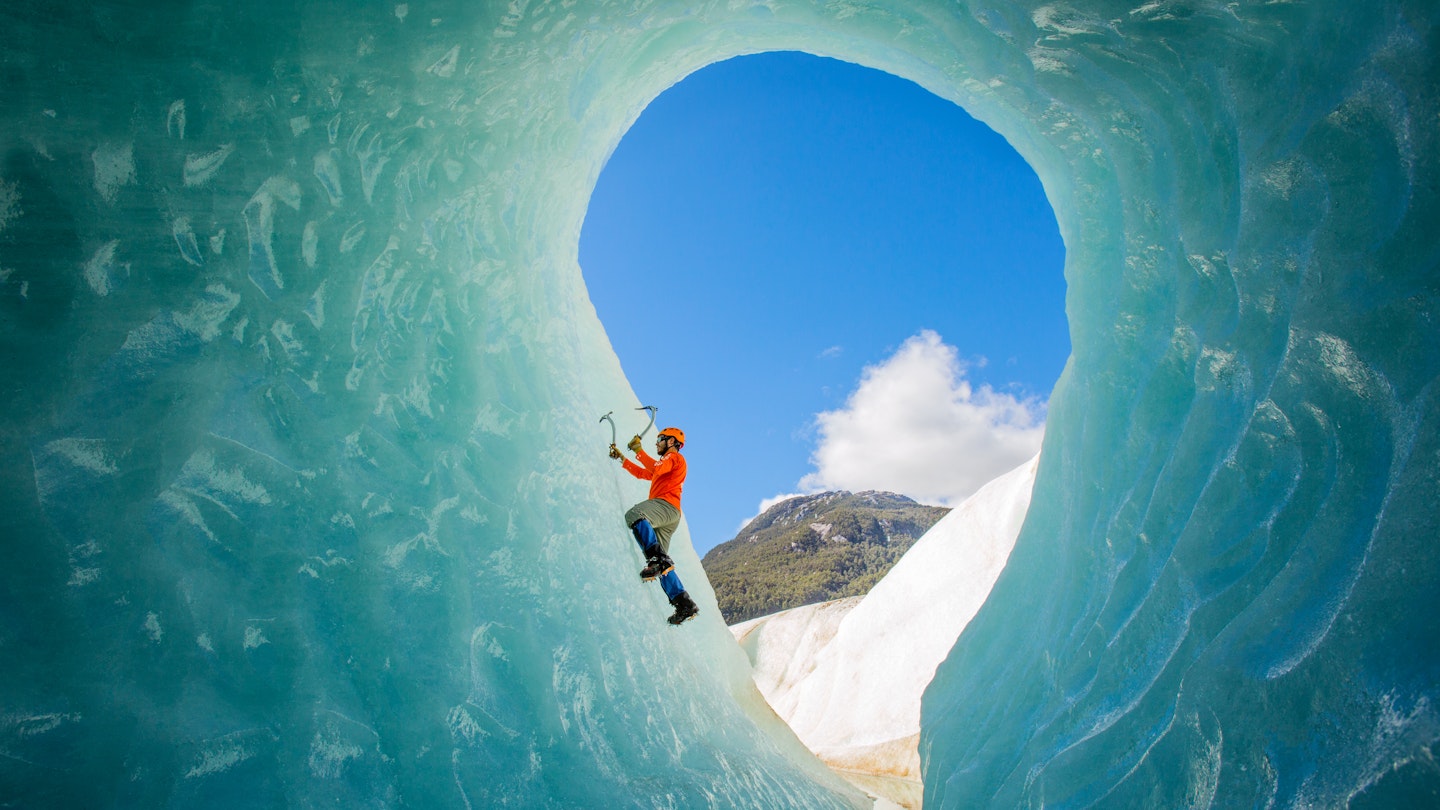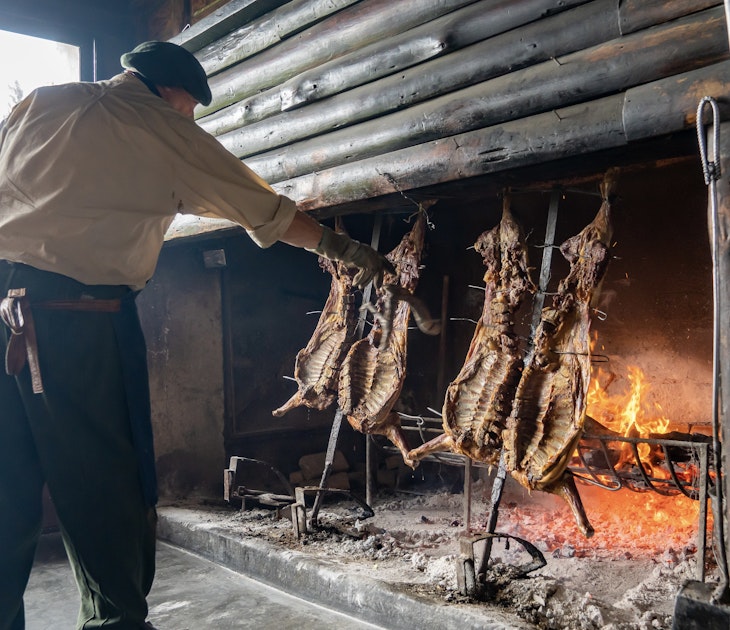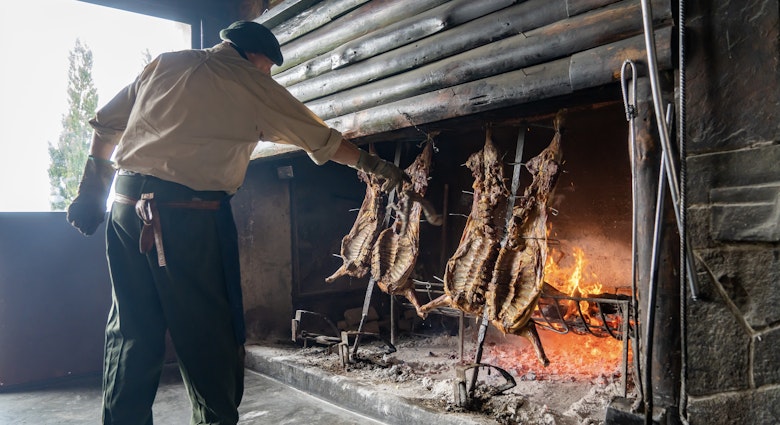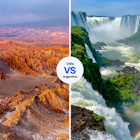Covering a massive chunk of southern Chile and Argentina, Patagonia is packed with outdoor adventure. It has some of South America’s best hiking, white water rafting, horseback riding, and wildlife-spotting, but it also gives you the opportunity to dig deeper – into its history, into cowboy culture, and even into the unexpected world of fusion dining at the end of the world.
This guide to the best places to visit in Patagonia will help answer all your questions about where you should go in this region of grasslands and mountains.
Torres del Paine National Park, Chile: go hiking and wildlife watching
You’ll see the characteristic bell-shaped Los Cuernos range and the trident granite towers of Las Torres long before you reach the most popular of Patagonia’s national parks. Torres del Paine is the only national park in Patagonia where you can arrange a multiday bunk-hut to bunk-hut hike while carrying nothing heavier than a day pack, or else opt for camping at well-equipped designated sites.
Chile’s pride and joy is the place for two unparalleled multi-day hikes. The "Circuit" takes you on a seven- to ten-day tour of the park’s undisputable highlights, from up-close-and-personal encounters with the two famous mountain ranges to the challenging crossing of John Gardner Pass, with unparalleled views of Glacier Grey from above. The three- to five-day "W" skips the backcountry trek and the pass crossing, but visits the three big-hitters: Glacier Grey, the French Valley, and Las Torres. Puma and guanaco sightings are frequent, particularly in the backcountry.
Ushuaia, Argentina: head here for cruises to the Antarctic
Every summer in the southern hemisphere finds Antarctica-bound travelers in Ushuaia, Argentina’s southernmost city, waiting to board one of the giant icebreakers in the harbor for the turbulent trip across stormy Drake’s Passage to the world’s remotest continent. You need at least a week to make the trip worthwhile, and money to spare. Last-minute "bargains" can sometimes be had, but you’ll need plenty of time on your hands to hang around, walking the steep streets overlooking the Beagle Channel, and hoping that there’s an empty berth with your name on it. Experienced deckhands can sign up to crew a yacht on weeks-long Antarctic trips.

El Calafate, Argentina: be in awe of vast glaciers
Every day, fleets of buses depart the compact, hugely popular Argentinian town of El Calafate for the Perito Moreno glacier – an accessible icy spectacle, and one of the world’s few advancing glaciers. A series of boardwalks lead to various viewpoints that allow you to contemplate this shining, blue-white wall of ice. Every now then, a muffled "crack" and splash signals the calving of a house-sized chunk of ice. Tour operators in El Calafate also arrange day-long catamaran cruises to more remote glaciers, such as Glacier Upsala Glacier Spegazzini on Lake Argentina. With its proliferation of boutique hotels and hostels, and a steak-, wine- and craft beer-heavy dining scene, El Calafate is a terrific jumping-off point for exploring the surrounding natural wonders.
Isla Navarino, Chile: experience end-of-the-world adventures
Whenever Puerto Williams – the "capital" of Chile’s Isla Navarino – is mentioned, Ushuaia turns green with envy because this tiny settlement of less than 3000 people beats the capital of Argentinian Tierra del Fuego to the title of southernmost permanently inhabited place on earth. Whether you’re swapping stories with centolla (king crab) fishers and Antarctica-bound research scientists at the town’s only bar, setting off to complete one of South America’s toughest multi-day treks – the Dientes de Navarino – or using Puerto Williams as a jumping-off spot to sail to Cape Horn, you’re likely to earn your adventurer’s stripes here.
Futaleufú, Chile: take on a white water rafting challenge
Imagine: you and rest of the rafting crew are hunkering down on your sides of the raft, waiting for the signal from the rafting guide to dig in and start rowing again like your life depends on it. Huge turquoise river waves are battering the inflatable boat and white water spray drenches you head to foot. You wipe the water out of your eyes and get ready to ride yet another set of Class VI rapids on one of the most challenging white water rivers in the world. The rafting trips take place between December and March, and there are numerous guesthouses in the namesake town that you can base yourself at before embarking on your white water adventure.
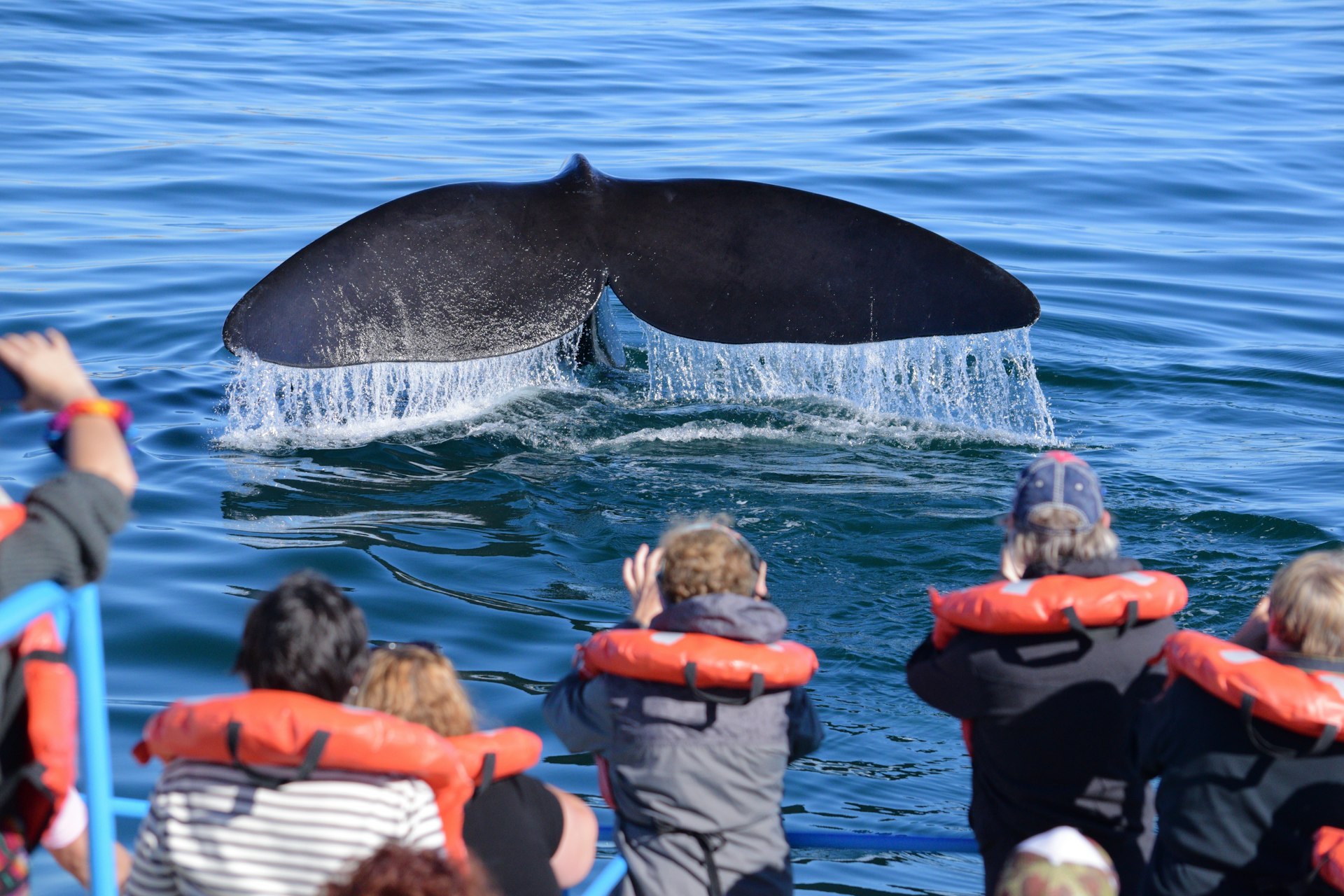
Península Valdés, Argentina: spot southern right whales
Picture this: you’re on a boat just off the coast of Península Valdés, a protected chunk of land in northeast Argentina, when a mighty spout of water shoots up from the sea. “Look, a whale!” someone yells, as the waves around you begin to churn with life. Every year, in mid-June, hundreds of southern right whales come to these frigid waters to breed and can often be spotted – sometimes from the shore – until mid-December. The peninsula – also home to sea lions, seals, and over 180 species of seabirds – is reached via the town of Puerto Madryn, where you can sign up for boat tours, kayaking, and diving excursions.
El Chaltén, Argentina: the starting point for amazing day hikes
Overlooked by the three-pronged Mount Fitz Roy peak, the tiny town of El Chaltén is the trekking capital of Argentinian Patagonia. Whether you’re tackling the exposed and challenging trek to the glacial Laguna de Los Tres, ambling though southern beech forest in the private Reserve Los Huemules in the hopes of spotting a huemul (endangered deer), or just walking to the waterfall at the north end of town, there are numerous day walk options to suit all abilities. Roughing it and camping is possible but not mandatory: every evening you can choose to return to your boutique guesthouse or hostel, and grab a hot meal and craft beer at one of the town’s numerous (and sophisticated) dining options, such as La Oveja Negra or Patagonicus.
Puerto Natales, Chile: great boutique accommodations and dining
Whether you’re a trekker or climber bound for Torres del Paine National Park, an ice climber or kayaker wanting to get up close and personal with glaciers, or looking to go horseback riding in the surrounding wilderness, you’ll find yourself in Puerto Natales – Chilean Patagonia’s second-largest town – sooner or later. It's the jumping-off point for every outdoor thrill imaginable. Luxury standouts include The Singular Patagonia (former abattoir turned 5-star hotel), Remota (estancia-meets-wilderness aesthetic), and the ship-like NOI Indigo, while boutique backpacker digs include Treehouse Patagonia, Wild and Yagan House. The dining scene runs the gamut from African-Patagonian fusion at Afrigonia, and inspired seasonal dishes at Lenga, to traditional steak and spit-roasted lamb at El Asador Patagonico, great pizza at Base Camp, and even original Calafate berry gin at the Last Hope Distillery.
Cueva de las Manos, Argentina: home to mysterious ancient rock art
In a hidden canyon, reachable by tour or your own wheels via the towns of Perito Moreno or Bajo Caracoles from the scenic Route 40, a boardwalk leads you past a vast overhanging rock face, decorated with ancient rock art. This Unesco World Heritage Site is one of the most prominent rock art sites in Southern America, with over 800 stencilled outlines of human hands, as well as puma, guanaco (wild cousin of the llama) and ñandú (small ostrich) footprints. The ancient inhabitants of the pampas created these black, white, and ochre stencils by blowing a mix of water and different types of soil against their hand or animal foot, for purposes unknown.
Punta Arenas, Chile: explore the port city's history
Before the opening of the Panama Canal in 1914, every ship rounding Cape Horn en route from Europe to California stopped in Punta Arenas for supplies. In the 19th century, Chile’s southernmost port city by the Magellan Strait grew wealthy from trade and sheep-farming, its riches reflected in the grand stone mansions of the wool barons, the wide avenues lined with cypresses, and the elaborate marble crypts of the city cemetery.
The cemetery is a fascinating place, the names reflecting the nationalities that shaped the city – Scottish, Croatian, Spanish, Scandinavian; you might even find the grave of Charles Milward, a relative of travel writer Bruce Chatwin. Learn about the indigenous peoples of Patagonia at the Museo Salesiano Maggiorino Borgatello, and get a glimpse into the bygone lives of some of the city’s most powerful families at the Museo Regional Braun Menendez. On the outskirts of the city, at the Museo Nao Victoria, you can admire the life-size replicas of Magellan’s ship, Darwin’s HMS Beagle, and the lifeboat that saved the lives of Ernest Shackleton and his crew in the Antarctic Ocean.
Puyuhuapi, Chile: soak in hot springs
If you’re driving or cycling Chile’s Carretera Austral, this historic fjordside town with its wood-shingled houses, founded in 1935 by four enterprising German settlers, makes for an excellent stopover. While thermal springs are common in Chile, Puyuhuapi is the only Patagonian town where you can soak your weary bones. Choose between Termas Ventisquero – the slightly scruffy springs a short walk from town, or arrange to stay in the plush Puyuhuapi Lodge, with private thermal pools and waterfalls, reachable via speedboat across the fjord.
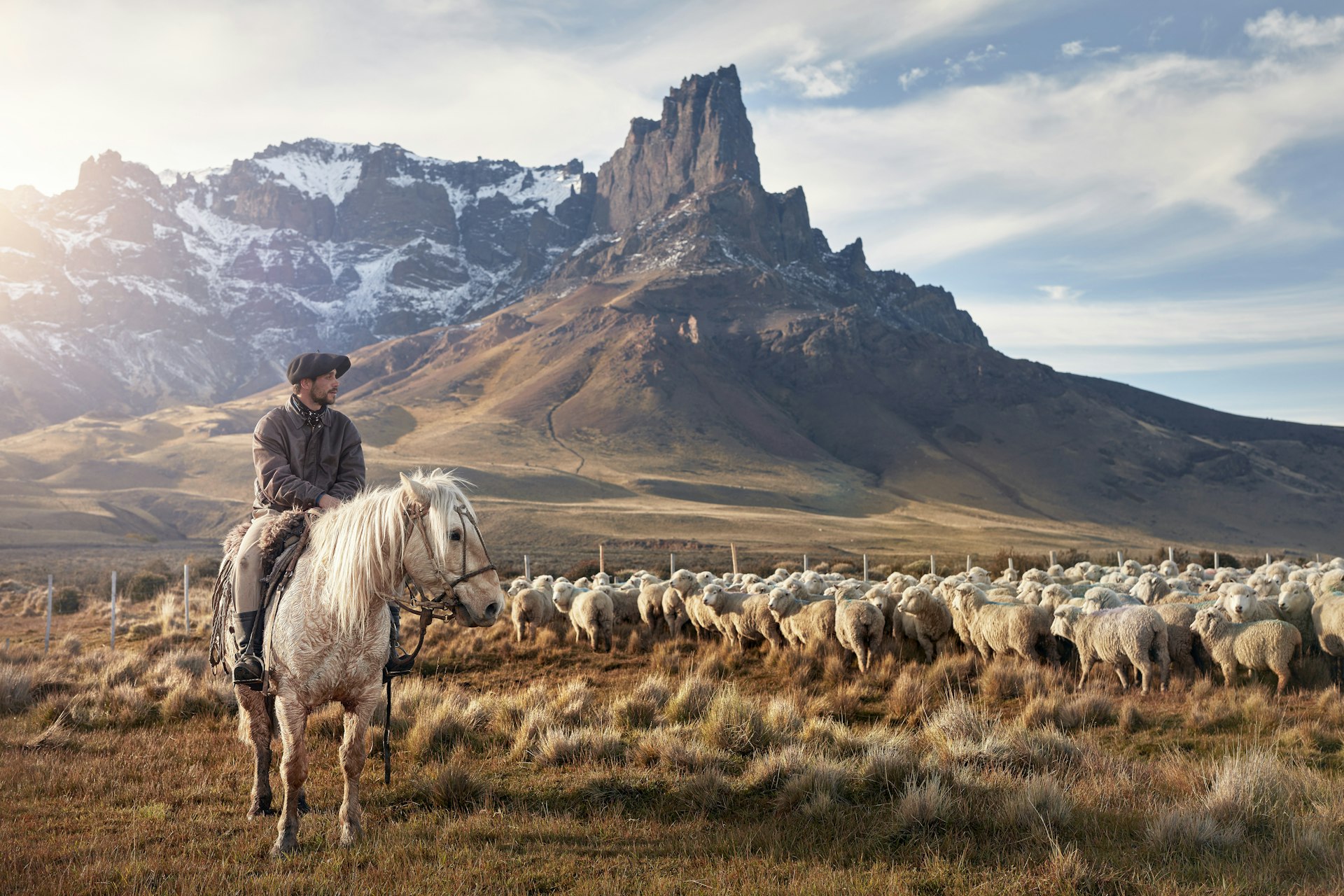
The Pampas: go horseback riding and experience rural life
In popular imagination Patagonia is synonymous with the Pampas – grasslands that stretch as far as the eye can see – and its inhabitants, the intrepid cattle herders known as gauchos in Argentina and huasos in Chile. You’ll often see them on horseback all over rural Patagonia, wearing sheepskin ponchos and berets, and sipping from flasks of yerba-mate herbal tea. Visitors can experience this rural way of life by staying on an estancia (ranch). Estancia stays can be organized from Puerto Natales (Chile) or El Calafate (Argentina); these typically include horseback riding excursions, as well as spit-roasted lamb asado (Patagonian barbecue).
The Carretera Austral, Chile: take an epic road trip
"Southern Highway" is a bit of a misnomer, as you’ll discover if you drive Chile’s remote, iconic road. Originally constructed on Pinochet’s orders in the 1970s, and still only partially paved, it winds itself some 694 miles (1117km) from Hornopirén in the north to Villa O’Higgins in the south, traversing fog-shrouded, often rainy landscapes of lush southern forest and giant wild rhubarb, snow-tipped mountains, and misty fjords.
Allow at least a couple of weeks to explore the unique little towns and national parks along the way. It’s possible to rent a car either in Puerto Montt, north of Hornopirén, or else in Coyhaique, the only town of any size, located halfway along the Carretera Austral.
Punta Tombo, Argentina: see penguins and other birdlife
You smell the penguins before you see them. The presence of nearly a million Magellanic penguins – some hiding in their underground burrows, some ambling down to the sea to go fishing, others standing around and grooming themselves – is a powerful assault on your senses. The long, narrow peninsula that’s home to the largest and most accessible of the penguin colonies that dot Patagonia also attracts kelp gulls, cormorants, flightless steamer ducks, and black oystercatchers. Visitors can stroll along the boardwalks past the beach and the nesting areas; get here either via your own wheels (early in the morning) or by tour from the nearby town of Trelew.
You might also like:
12 unmissable hikes in Patagonia: wonder at the pristine wilderness
I went on a solo trip to Patagonia (and I loved it)
Argentina's best road trips promise adventure
